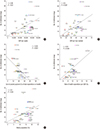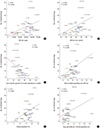1. Onakpoya IJ, Heneghan CJ, Aronson JK. Delays in the post-marketing withdrawal of drugs to which deaths have been attributed: a systematic investigation and analysis. BMC Med. 2015; 13:26.
2. Ghobrial IM, Rajkumar SV. Management of thalidomide toxicity. J Support Oncol. 2003; 1:194–205.
3. Dieppe PA, Ebrahim S, Martin RM, Jüni P. Lessons from the withdrawal of rofecoxib. BMJ. 2004; 329:867–868.
4. Friedman MA, Woodcock J, Lumpkin MM, Shuren JE, Hass AE, Thompson LJ. The safety of newly approved medicines: do recent market removals mean there is a problem? JAMA. 1999; 281:1728–1734.
5. Bakke OM, Manocchia M, de Abajo F, Kaitin KI, Lasagna L. Drug safety discontinuations in the United Kingdom, the United States, and Spain from 1974 through 1993: a regulatory perspective. Clin Pharmacol Ther. 1995; 58:108–117.
6. UN Department of Economic and Social Affairs. Consolidated List of Products Whose Consumption and/or Sale Have Been Banned, Withdrawn, Severely Restricted or not Approved by Governments. Pharmaceuticals Eighth Issue. New York: United Nations Publication;2003.
7. Fung M, Thornton A, Mybeck K, Wu JH, Hornbuckle K, Muniz E. Evaluation of the characteristics of safety withdrawal of prescription drugs from worldwide pharmaceutical markets-1960 to 1999*. Drug Inf J. 2001; 35:293–317.
8. Ninan B, Wertheimer AI. Withdrawing drugs in the US versus other countries. University of Minnesota, College of Pharmacy;2012. accessed on 9 June 2014. Available at
http://purl.umn.edu/137111.
9. Makuch RW, Shi R. Comparison of drug approvals in europe versus the United States: An analysis of discrepancies between drug products reviewed by EMA and FDA. Ther Innov Regul Sci. 2014; 48:362–366.
10. Abraham J, Davis C. A comparative analysis of drug safety withdrawals in the UK and the US (1971-1992): implications for current regulatory thinking and policy. Soc Sci Med. 2005; 61:881–892.
11. Coloma PM, Schuemie MJ, Trifirò G, Gini R, Herings R, Hippisley-Cox J, Mazzaglia G, Giaquinto C, Corrao G, Pedersen L, et al. Combining electronic healthcare databases in Europe to allow for large-scale drug safety monitoring: the EU-ADR Project. Pharmacoepidemiol Drug Saf. 2011; 20:1–11.
12. Behrman RE, Benner JS, Brown JS, McClellan M, Woodcock J, Platt R. Developing the Sentinel System--a national resource for evidence development. N Engl J Med. 2011; 364:498–499.
13. UN Department of Economic and Social Affairs. Consolidated List of Products Whose Consumption and/or Sale Have Been Banned, Withdrawn, Severely Restricted or not Approved by Governments: pharmaceuticals tenth issue. New York: United Nations Publication;2004.
14. UN Department of Economic and Social Affairs. Consolidated List of Products Whose Consumption and/or Sale Have Been Banned, Withdrawn, Severely Restricted or not Approved by Governments: pharmaceuticals tenth issue. New York: United Nations Publication;2004.
15. UN Department of Economic and Social Affairs. Consolidated List of Products Whose Consumption and/or Sale Have Been Banned, Withdrawn, Severely Restricted or not Approved by Governments: pharmaceuticals fourteenth issue. New York: United Nations Publication;2009.
18. Nam SH, Kim YS, Ju YS. A study of composite index on health and welfare. Seoul: Korea Institute for Health and Social Affairs;2012.
19. Lim KJ, Lim SM, Seo KH. Analysis of the OECD Health Data 2012. Seoul: Research Institute for Healthcare Policy;2013.
20. Kim L, Kim JA, Kim S. A guide for the utilization of Health Insurance Review and Assessment Service National Patient Samples. Epidemiol Health. 2014; 36:e2014008.
21. R Development Core Team. R: a language and environment for statistical computing. Vienna: Austria R Foundation for Statistical Computing;2010.
22. OECD. Life expectancy at birth and GDP per capita, 2011 (or nearest year). Health at a Glance. Paris: OECD Publishing;2013.
23. Yang S, Khang YH, Harper S, Davey Smith G, Leon DA, Lynch J. Understanding the rapid increase in life expectancy in South Korea. Am J Public Health. 2010; 100:896–903.
24. Hall W, Doran C, Degenhardt L, Shepard D. Illicit opiate abuse. In : Jamison DT, Breman JG, Measham AR, Alleyne G, Claeson M, Evans DB, editors. Disease control priorities in developing countries. 2nd ed. Washington DC: World Bank Publications;2006. p. 907–932.
26. Choi D, Choi M, Ko A. Current status of pharmaceutical safety management in Korea. J Korean Med Assoc. 2012; 55:827–834.
27. Ratanawijitrasin S, Wondemagegnehu E. Effective drug regulation: a multicountry study. Geneva, Switzerland: World Health Organization;2002.










 PDF
PDF ePub
ePub Citation
Citation Print
Print



 XML Download
XML Download